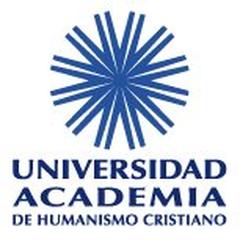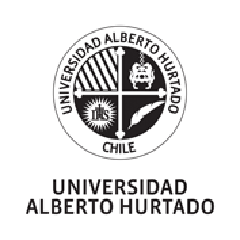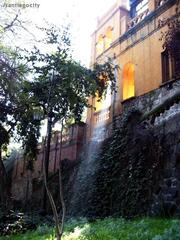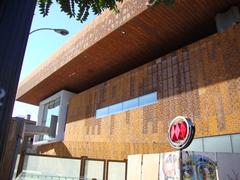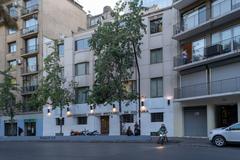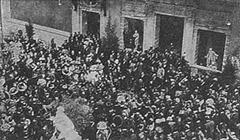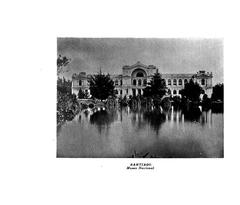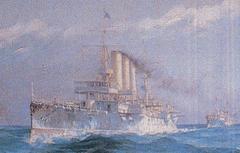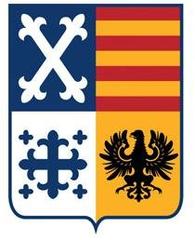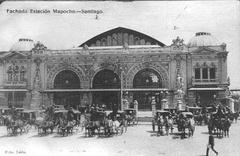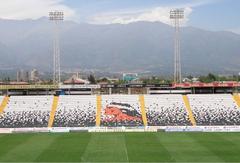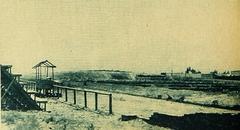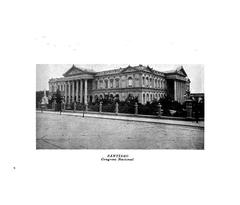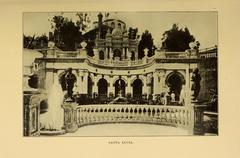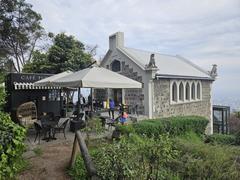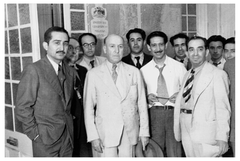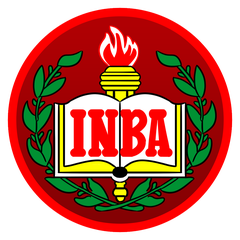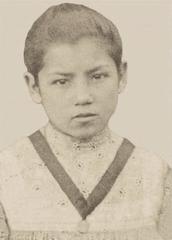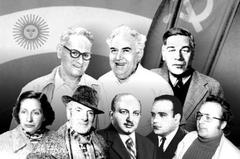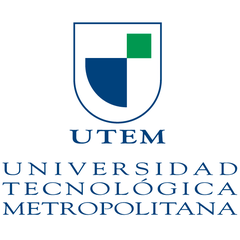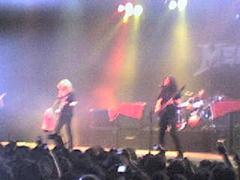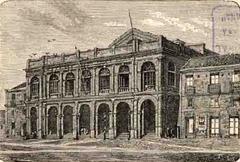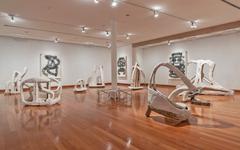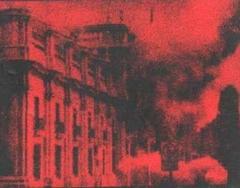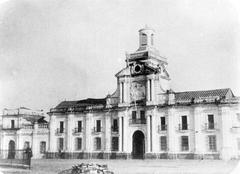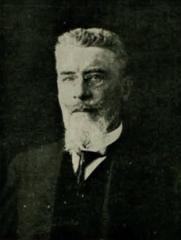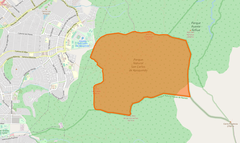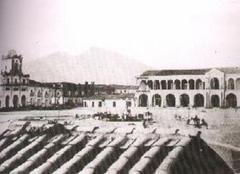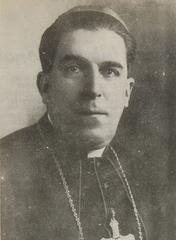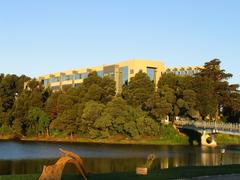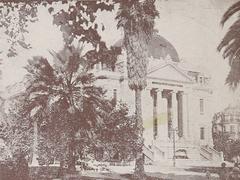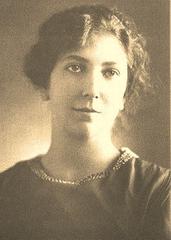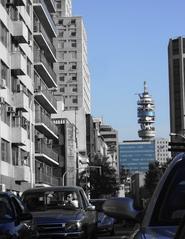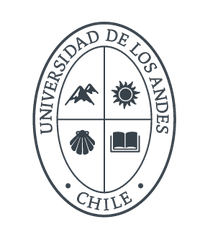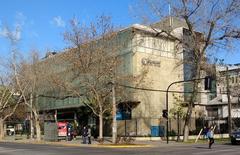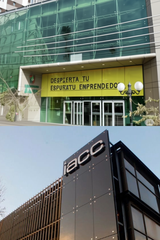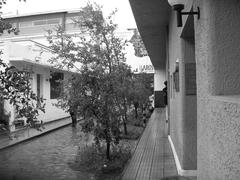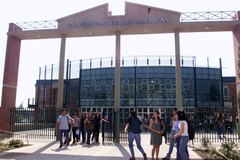Chilean National History Museum Santiago – Visiting Hours, Tickets, and Travel Guide
Date: 14/06/2025
Introduction
Nestled in the historic heart of Santiago at Plaza de Armas, the Chilean National History Museum (Museo Histórico Nacional, MHN) stands as a gateway to understanding Chile’s rich cultural, political, and social evolution. Housed in the neoclassical Palacio de la Real Audiencia de Santiago—a national monument dating to 1808—the museum’s architecture and collections together offer visitors an immersive journey from pre-Columbian societies to the present day. With free admission, accessible facilities, and a prime location, the MHN is a must-see for history enthusiasts, cultural travelers, and anyone seeking to connect with Santiago’s heritage (Museo Histórico Nacional).
Contents
- History and Cultural Significance
- Founding and Development
- Architectural Highlights
- Symbolism and Representation
- Permanent Collections and Exhibitions
- Thematic and Chronological Organization
- Notable Artifacts and Highlights
- Temporary Exhibitions and Special Events
- Visitor Information
- Visiting Hours and Admission
- Accessibility and Facilities
- Guided Tours and Educational Programs
- Travel Tips and Nearby Attractions
- Educational Role and Outreach
- Frequently Asked Questions (FAQ)
- Conclusion and Recommendations
History and Cultural Significance
Founding and Development
Established in 1911, the MHN occupies the Palacio de la Real Audiencia de Santiago, a building integral to Chile’s colonial history. The museum’s foundation marked a national commitment to preserving and interpreting the country’s past, offering a comprehensive lens on Chile’s transformation from indigenous societies through the Spanish colonial era, independence, and into modernity.
Architectural Highlights
The museum’s home is a masterpiece of neoclassical design, combining Italian Renaissance influences with Chilean colonial heritage. Its rectangular plan, grand halls, Ionic and Corinthian columns, and impressive portico reflect Chile’s aspirations in the late 19th and early 20th centuries to align with European architectural standards. Declared a National Historic Monument in 1991, the building itself is a focal point for visitors and a testament to Santiago’s urban legacy.
Symbolism and Representation
Located at the city’s “kilometer zero,” the MHN is more than a collection of artifacts—it is a symbol of Chilean national identity. Its exhibitions trace the country’s journey through moments of unity, conflict, and transformation, fostering a sense of shared heritage and encouraging critical engagement with the nation’s complex history. The museum’s commitment to addressing difficult periods, such as the Pinochet regime, further cements its role in public debate and reconciliation (official source).
Permanent Collections and Exhibitions
Thematic and Chronological Organization
Spanning 18 themed rooms, the MHN’s permanent exhibitions guide visitors through Chile’s history in a clear, chronological narrative—from early indigenous cultures and the Spanish conquest, through independence, republican development, and into the contemporary period. This structure supports both chronological and thematic exploration, making the museum accessible for diverse learning styles (Patrimonio Cultural; WhichMuseum).
Notable Artifacts and Highlights
- Pre-Columbian and Indigenous Cultures: Archaeological objects, pottery, and tools from societies like the Mapuche and Aymara (DicasChile).
- Spanish Conquest and Colonial Era: Maps, weaponry, religious art, and colonial-era furnishings.
- Independence and Republican Development: Textiles, documents, uniforms, and paintings documenting Chile’s struggle for sovereignty and modernization.
- 20th Century and Popular Unity: Exhibits on the Allende government, the military dictatorship, and social transformations, featuring photographs and personal testimonies.
- Benjamin Vicuña Mackenna Tower: Panoramic city views; access is limited to 20 minutes per group, with last entry at 17:15 (DicasChile).
- National Photographic Archive: Over 232,000 prints and 40,000 digitized images (Patrimonio Cultural).
Temporary Exhibitions and Special Events
The MHN regularly hosts temporary exhibitions in spaces like the Sala Gobernadores, focusing on specific events, anniversaries, or social themes. Notably, exhibitions such as “Ensayo general. Nuevos relatos en el MHN” invite visitors to engage with lesser-known narratives and contemporary perspectives (Museo Histórico Nacional). Collaborations with community groups and other institutions foster inclusivity and dialogue.
Visitor Information
Visiting Hours and Admission
- Opening Times: Tuesday to Sunday, 10:00 AM–6:00 PM (last entry to tower at 17:15). Closed Mondays and some public holidays.
- Admission: Free for all visitors. Some special exhibitions or events may require tickets—confirm via the official website.
Accessibility and Facilities
- Location: Plaza de Armas 951, Santiago—walking distance from the Plaza de Armas metro station (Line 5, green).
- Facilities: Information desk, restrooms (accessible), cloakroom, Wi-Fi, and multilingual staff.
- Accessibility: Ramps, elevators, designated restrooms, and wheelchairs available. Some historic areas may have limited access.
- Families and Groups: Interactive exhibits, strollers allowed, baby-changing facilities, and guided tours for groups (advance booking required).
Guided Tours and Educational Programs
- Guided Tours: Free, available Tuesday–Friday for groups of 10–45 by advance reservation (one month ahead recommended) (Nuestro.cl).
- Languages: Tours in Spanish; limited English tours upon request; translation apps recommended for non-Spanish speakers.
- Outreach: Programs like MUVACO bring museum content to schools and communities; the museum also hosts Chile’s oldest youth science fair.
Travel Tips and Nearby Attractions
- Getting There: Easily accessible by metro, buses, and taxis; Plaza de Armas is pedestrian-friendly with ample signage.
- Nearby: Santiago Metropolitan Cathedral, Central Post Office, Museo Chileno de Arte Precolombino, and vibrant Plaza de Armas activities.
- Dining: Numerous cafés and restaurants surround the area.
- Safety: Security personnel, bag inspections, and seismic safety standards in place.
Educational Role and Outreach
The MHN’s mission extends beyond exhibitions to include public education and scholarly research. Its public library contains about 17,000 volumes, and its archives support academic study. Interactive and multimedia displays, workshops, and teacher training sessions foster critical thinking and historical awareness among diverse audiences. Outreach and traveling exhibitions make history accessible to all Chileans, including those in remote communities (official source).
Frequently Asked Questions (FAQ)
Q: What are the museum’s visiting hours?
A: Tuesday to Sunday, 10:00 AM to 6:00 PM; closed Mondays and select holidays.
Q: Is admission free?
A: Yes, general admission is free. Special exhibitions may require a ticket.
Q: Are guided tours available?
A: Yes, free tours are available for groups with advance booking.
Q: Is the museum accessible to visitors with disabilities?
A: Yes, with ramps, elevators, and accessible restrooms; some historic areas may have limited access.
Q: What languages are available for exhibits and tours?
A: Spanish is standard; some English translations and tours are available.
Q: Can I take photographs?
A: Non-flash photography is generally permitted unless otherwise indicated.
Q: What COVID-19 protocols are in place?
A: The museum follows national health guidelines; check the official website for current measures.
Conclusion and Recommendations
The Chilean National History Museum is a cornerstone of Santiago’s cultural landscape, offering a comprehensive, accessible, and engaging introduction to Chile’s history. With its free admission, central location, and rich exhibitions, MHN is ideal for visitors of all backgrounds. Enhance your experience by planning ahead—check current hours and any special exhibition information, book guided tours, and explore nearby historical sites.
For a broader perspective, visit the Chilean National Museum of Natural History in Quinta Normal Park, which complements the MHN’s focus by showcasing Chile’s natural and scientific heritage (Museo Nacional de Historia Natural). Together, these institutions provide a multifaceted view of Chilean identity.
For detailed updates, virtual tours, and exclusive content, download the Audiala app and follow both museums on social media. Make the most of your time in Santiago by immersing yourself in its vibrant history and culture.
